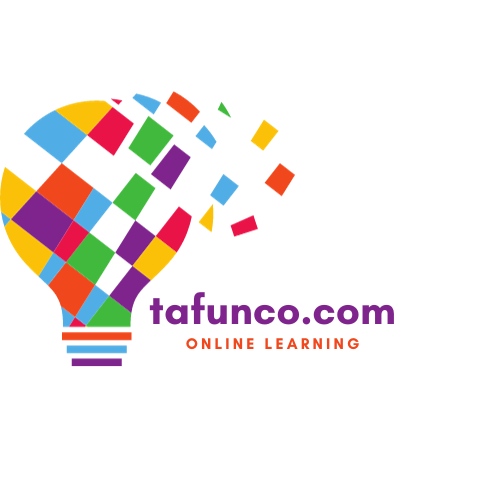With the emergence of online learning platforms, the educational environment has seen a tremendous upheaval in recent years. These platforms serve a worldwide audience by providing a wide variety of courses and learning opportunities. With the increasing demand for online education, it is critical for students to make well-informed decisions when choosing the best platform for their learning requirements. We will compare and contrast a number of online learning systems in this post, looking at their benefits, weaknesses, and other aspects.
1. Online learning platform Coursera
The well-known online learning platform Coursera offers a broad range of courses via partnerships with prestigious colleges and organizations. Coursera’s extensive course catalog, which covers everything from business and computer science to the humanities and health, is one of its main advantages. The website offers a variety of paid and free courses, with the opportunity to graduate with degrees and certifications. Peer-reviewed exams and interactive video courses on Coursera enhance the overall quality of the learning process.

Strengths: – Excellent instruction from prestigious universities.
– Degree and specialization programs are offered.
– Practical skills are emphasized via practical projects.
Drawbacks: – The cost of certain courses might be high.
Restricted adaptability in certain programs’ course schedules.
2. edX
Another significant competitor in the online education market is edX, which offers courses in association with colleges and organizations all around the globe. Recognized for its dedication to open-source education, edX offers a wide range of courses, including MicroMasters and MOOCs (Massive Open Online Courses). The possibility to audit courses for free with the option to pay for a certified degree is what makes this platform special. Courses in computer science, engineering, and data science are very well-liked on edX.
Advantages: – A large selection of courses with a free audit option are available.
– MicroMasters programs provide in-depth expertise in certain fields.
– A strong focus on academic rigor and course quality.
Cons: – Some users may find the UI less user-friendly.
– Students on a tight budget may be discouraged by the expense of credentials.
3. Audacity
Udacity sets itself apart by offering nanodegree programs and emphasizing technology-related courses. Programs for nanodegrees aim to provide students real-world, employable skills in fields like artificial intelligence, data science, and programming. The practical projects and mentoring possibilities offered by Udacity enhance the interactive nature of the learning process.
Strengths: – Curriculum focused on work preparedness and matched with industry standards.
– Project-based learning and mentoring improve practical skills.
Real-world initiatives are often a part of nanodegree programs.
Cons: – Fewer course options than on larger platforms.
– More expensive nanodegree programs.
4. The Khan Education
By offering a free, nonprofit online learning platform covering a broad variety of courses, Khan Academy adopts a novel approach. After initially concentrating on K–12 education, Khan Academy has extended its curriculum to include subjects related to higher education. The platform is well-known for its practice tasks, tailored learning dashboards, and clear and concise teaching films.
Advantages: – Free availability of excellent instructional resources.
– Personalized learning pathways using adaptive learning technologies.
– Extensive covering of topics at the K–12 and beginning college levels.
Cons: – Few advanced or specialist courses are offered.
– Unsuitable for students pursuing recognized degrees or qualifications.
5. Education on LinkedIn:
LinkedIn Learning, formerly known as Lynda.com, is a platform for professional development that provides classes in technology, business, and creative skills. This platform was purchased by LinkedIn, and it works well with the social media site to help users display their finished courses on their LinkedIn accounts. Professionals wishing to change jobs or upskill often use LinkedIn Learning.
Strengths: – Professional networking via integration with LinkedIn.
– Learning pathways and courses tailored to a particular industry.
– Content that is updated often to stay up to speed with market trends.
Cons: – Fewer academic courses than on other sites.
– For infrequent learners, the subscription-based approach may not be financially advantageous.
6. Skillshare:

One site that stands out for encouraging a community of creators and emphasizing project-based learning is Skillshare. It is a great option for anyone who want to discover their creative side because of its courses, which include writing, graphic design, and photography. With its subscription-based business strategy, Skillshare offers consumers unrestricted access to a huge collection of lessons.
One of its strengths is that it emphasizes creativity via project-based learning.
– An inexpensive membership plan offering unrestricted access.
– A vibrant community for feedback and cooperation.
Drawbacks:
– Academic and technical disciplines get less attention.
The caliber of the courses varies.
7. Amazon
Teachers may produce and offer their courses on Udemy, an online marketplace. This leads to a wide variety of courses, ranging from personal development to technical areas. Udemy is a cost-effective choice since it often offers reduced rates. But since it varies depending on the various teachers, course quality might differ.
Advantages:
– Reasonably priced, often with promotions.
A wide variety of courses covering a number of subjects.
– Access to bought courses for life.
Drawbacks:
– Course quality varies somewhat.
Not every course leads to certification.
8. Codecademy:
Codecademy provides an engaging and practical learning environment for anybody interested in learning more about programming and coding. This platform is perfect for novices since it offers coding tasks in an online coding environment. The emphasis of Codecademy is on programming languages like HTML, JavaScript, and Python.
Advantages:
– Interactive coding tasks for hands-on instruction.
– Basic course access is free; premium material requires an inexpensive membership.
– Quick feedback on coding tasks.
Reverses:
Restricted to subjects related to programming and coding.
– Insufficient theoretical justifications.
9. FutureLearn:
A platform called FutureLearn offers a variety of courses via partnerships with academic institutions and cultural organizations. It places a strong emphasis on social learning, promoting dialogue and cooperation among students. The courses often have a timetable, which gives them a structure akin to that of conventional classroom instruction.
Advantages:
– Partnerships with prominent colleges and organizations.
– Pay attention to discussion boards and social learning.
A wide variety of courses, including those in specialized fields.
Reverses:
– Some courses need money in order to get certified.
– Strict deadlines for the courses.
10. Education using Google Workspace:
Students and educators are the target audience for Google Workspace for Education, which includes Google Classroom. It combines a number of Google products to make organizing, collaborating, and communicating easier. It is often used in educational institutions to create a digital learning environment, even though it is not a stand-alone learning platform.
Advantages:
– Smooth interaction with Google Docs, Sheets, and Slides tools.
– Real-time interaction tools for collaboration.
– Free for academic establishments.
Reverses:
– Mainly intended for use in educational settings.
– Less course material than on specialized platforms.
New Trends and Things to Think About in the Future:
A number of trends and factors are developing that might have an impact on the direction of digital education as online learning platforms continue to change the educational environment.
1. Adaptive Learning Technology:
– Across platforms, there is a clear expanding focus on adaptive learning technologies. With the use of this technology, each student’s unique demands and learning style are catered to throughout the curriculum. This customized method meets the various demands of pupils while improving learning efficiency.
2. Crystalline Learning Modules:
– Microlearning, which consists of brief yet concentrated learning modules, is growing in popularity. This method accommodates learners’ hectic schedules by enabling them to pick up targeted information or skills in manageable pieces. Platforms may use this format more often in response to learners’ desires for rapid and focused learning experiences.
3. Integraton of Augmented and Virtual Reality
: A frontier that offers immersive and interactive learning experiences is the integration of virtual and augmented reality (VR and AR) into online learning systems. With its ability to provide realistic simulations and practical instruction, this technology may have a significant influence on industries including healthcare, engineering, and the sciences.
4. Credentialing using Blockchain:
– Research is being done on blockchain technology for transparent and safe credentialing. This may completely change the verification process for degrees and certificates, increasing the legitimacy of online education. Because credentials are verified via blockchain, they are more generally recognized and reliable.

5. E-learning Platforms for Businesses:
– Online education is not only for those pursuing degrees. Platforms for corporate learning are becoming more popular as businesses realize how important it is to keep employees developing. In response to this increasing demand, online learning platforms such as LinkedIn Learning and Udemy for Business are providing professional skill-building courses.
6. Inclusivity and Global Accessibility:
– Online learning systems are working to become more inclusive and accessible as the internet spreads around the globe. There is an attempt to meet the demands of students from a variety of backgrounds, languages, and needs. To guarantee an accessible and global learning environment, tools like subtitles and translations are being included.
7. Personalized Learning Paths Driven by AI:
– Personalized learning pathways are being created by using artificial intelligence (AI) to assess user data and behavior. The whole learning experience is improved by these AI-driven suggestions, which assist students in finding courses and material that match their interests, background, and career aspirations.
8. Changing Business Structures:
– Online education providers are experimenting with different business plans. While some systems work on a subscription basis, others provide free courses with premium certificates. Platforms’ approaches to monetizing their services may change in the future, putting more of an emphasis on premium content and value-added features.
In summary, the field of online education is dynamic and changing quickly. The aforementioned developments point to a dedication to improving the quality, usability, and customization of digital education. A successful online learning experience will depend on learners’ ability to remain up to date on emerging trends and adjust to new technology as they traverse this always shifting environment.
In summary:
Online learning is a big and varied field, and every platform has its own advantages and characteristics. The best platform to use will rely on personal preferences, learning goals, and financial limitations. There is surely a platform that meets your objectives, whether you are searching for career-oriented programs, practical projects, or academic rigor. Learners may make well-informed selections and start a fulfilling online learning path that fits with their career and educational goals by doing a complete comparison study.



